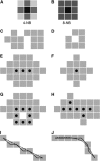Topology and hemodynamics of the cortical cerebrovascular system
- PMID: 22472613
- PMCID: PMC3367227
- DOI: 10.1038/jcbfm.2012.39
Topology and hemodynamics of the cortical cerebrovascular system
Abstract
The cerebrovascular system continuously delivers oxygen and energy substrates to the brain, which is one of the organs with the highest basal energy requirement in mammals. Discontinuities in the delivery lead to fatal consequences for the brain tissue. A detailed understanding of the structure of the cerebrovascular system is important for a multitude of (patho-)physiological cerebral processes and many noninvasive functional imaging methods rely on a signal that originates from the vasculature. Furthermore, neurodegenerative diseases often involve the cerebrovascular system and could contribute to neuronal loss. In this review, we focus on the cortical vascular system. In the first part, we present the current knowledge of the vascular anatomy. This is followed by a theory of topology and its application to vascular biology. We then discuss possible interactions between cerebral blood flow and vascular topology, before summarizing the existing body of the literature on quantitative cerebrovascular topology.
Figures








Similar articles
-
Cerebral vasomotor reactivity in neurodegenerative diseases.Neurol Neurochir Pol. 2016 Nov-Dec;50(6):455-462. doi: 10.1016/j.pjnns.2016.07.011. Epub 2016 Aug 5. Neurol Neurochir Pol. 2016. PMID: 27553189 Review.
-
Lymphatic Clearance of the Brain: Perivascular, Paravascular and Significance for Neurodegenerative Diseases.Cell Mol Neurobiol. 2016 Mar;36(2):181-94. doi: 10.1007/s10571-015-0273-8. Epub 2016 Mar 18. Cell Mol Neurobiol. 2016. PMID: 26993512 Free PMC article. Review.
-
The neurovascular unit in brain function and disease.Acta Physiol (Oxf). 2011 Sep;203(1):47-59. doi: 10.1111/j.1748-1716.2011.02256.x. Epub 2011 Mar 22. Acta Physiol (Oxf). 2011. PMID: 21272266 Review.
-
Microcirculation of the brain: morphological assessment in degenerative diseases and restoration processes.Rev Neurosci. 2015;26(1):75-93. doi: 10.1515/revneuro-2014-0049. Rev Neurosci. 2015. PMID: 25337818 Review.
-
Age-dependent cerebrovascular abnormalities and blood flow disturbances in APP23 mice modeling Alzheimer's disease.J Neurosci. 2003 Sep 17;23(24):8453-9. doi: 10.1523/JNEUROSCI.23-24-08453.2003. J Neurosci. 2003. PMID: 13679413 Free PMC article.
Cited by
-
Cognitive Function in Kidney Transplantation.Curr Transplant Rep. 2020 Sep;7:145-153. doi: 10.1007/s40472-020-00284-0. Epub 2020 Jul 1. Curr Transplant Rep. 2020. PMID: 32905482 Free PMC article.
-
Assessment of a Non-Invasive Brain Oximeter in a Sheep Model of Acute Brain Injury.Med Devices (Auckl). 2019 Dec 3;12:479-487. doi: 10.2147/MDER.S235804. eCollection 2019. Med Devices (Auckl). 2019. PMID: 31824197 Free PMC article.
-
Subcellular analysis of blood-brain barrier function by micro-impalement of vessels in acute brain slices.Nat Commun. 2023 Jan 30;14(1):481. doi: 10.1038/s41467-023-36070-6. Nat Commun. 2023. PMID: 36717572 Free PMC article.
-
Vascular Supply of the Cerebral Cortex is Specialized for Cell Layers but Not Columns.Cereb Cortex. 2015 Oct;25(10):3673-81. doi: 10.1093/cercor/bhu221. Epub 2014 Sep 21. Cereb Cortex. 2015. PMID: 25246513 Free PMC article.
-
Current analysis of hypoxic-ischemic encephalopathy research issues and future treatment modalities.Front Neurosci. 2023 Jun 9;17:1136500. doi: 10.3389/fnins.2023.1136500. eCollection 2023. Front Neurosci. 2023. PMID: 37360183 Free PMC article. Review.
References
-
- Barros LF, Bittner CX, Loaiza A, Porras OH. A quantitative overview of glucose dynamics in the gliovascular unit. Glia. 2007;55:1222–1237. - PubMed
-
- Blum H.1967A transformation for extracting new descriptors of shape Models for the perception of speech and visual form(Wathen-Dunn W, ed),Cambridge, MA: MIT Press; 362–380.
Publication types
MeSH terms
LinkOut - more resources
Full Text Sources
Other Literature Sources
Medical

